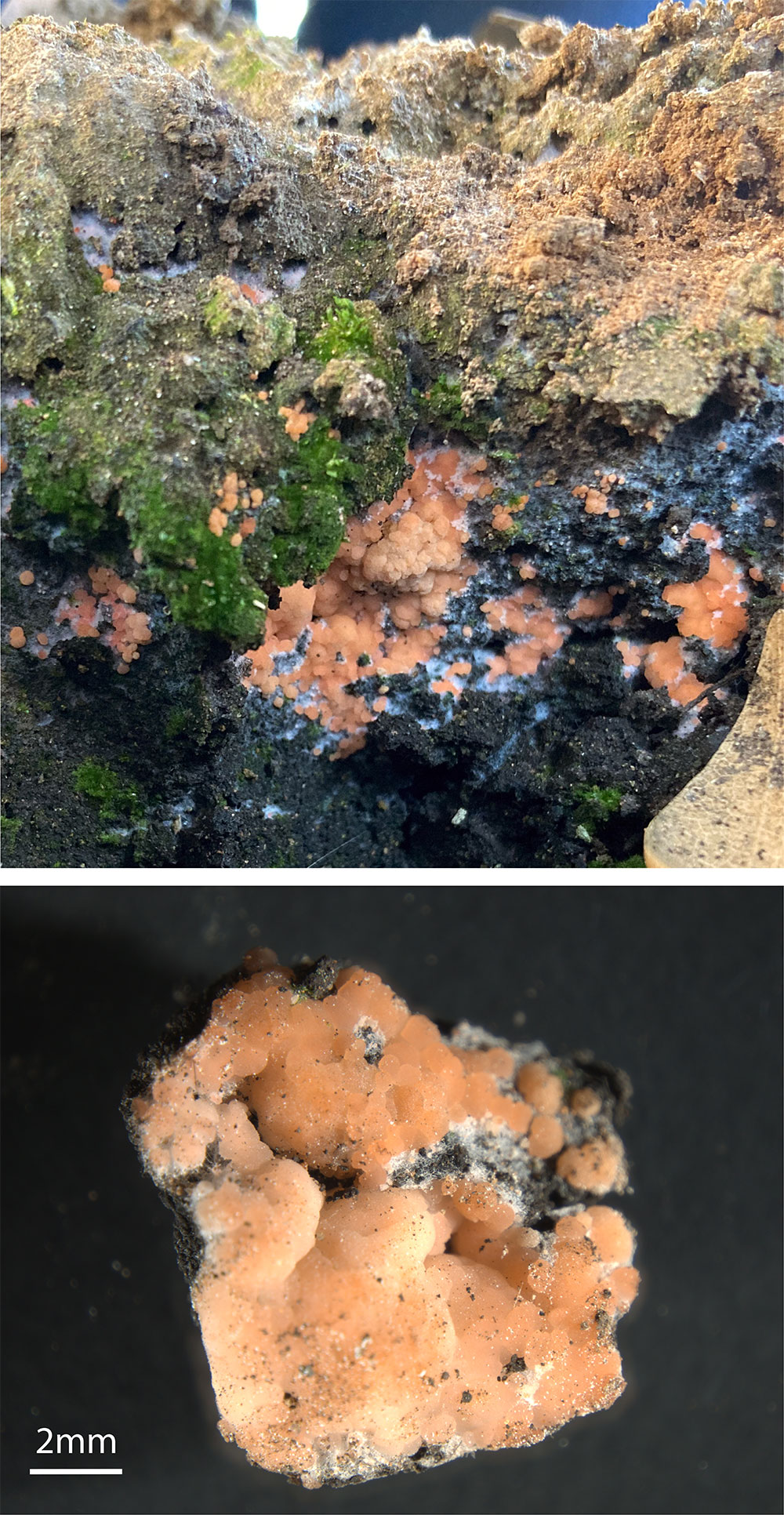
[image caption]
Understanding why some “fire-loving” fungi thrive after wildfire

[image caption]
Wildfires result in the death of many microorganisms in a forest’s soils, but some microbes are adapted to fire—and some even flourish in such conditions. A study led by postdoctoral researcher Monika Fischer working in the lab of Professor Matthew Traxler in the Department of Plant and Microbial Biology (PMB) offers insight into why one of these pyrophilous or “fire-loving” fungi appears rapidly and thrives after a fire.
PMB graduate student Frances Stark is also a co-author of the study, which was featured in the New York Times earlier this week.
Published recently in the journal Frontiers in Microbiology, the study focused on Pyronema, a genus of pyrophilous fungi, and aimed to understand whether Pyronema eats the charcoal left behind after a fire. To find out if Pyronema can eat charcoal, the authors grew the fungus from samples collected by PMB and ESPM Professor Tom Bruns’s team after the Rim fire in California in 2013.
The results showed that Pyronema did in fact eat charcoal. This finding tells the researchers that Pyronema is an important player in recycling carbon in charcoal back into recovering ecosystems after fire, said Dr. Fischer.
READ MORE
- “This Fire-Loving Fungus Eats Charcoal, if It Must” (New York Times)
- “Pyrolyzed Substrates Induce Aromatic Compound Metabolism in the Post-fire Fungus, Pyronema domesticum” (Frontiers in Microbiology)
